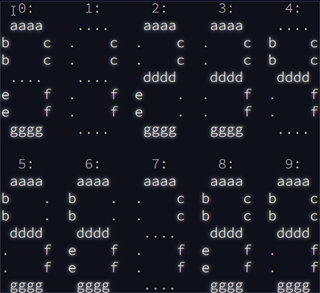Objective
A seven segment display is a common type of electronic display that uses seven electronic segments to display a digit.

For this challenge, the signals were messed up, and the solution involved decoding the signals.
Part 1
How many times do the digits 1, 4, 7 or 8 appear.
digit_length_map = {2: '1', 3: '7', 4: '4', 7: '8'}
def day8_1(puzzle_input: List[Tuple]):
return sum([len([output
for output in outputs
if len(output) in [2, 3, 4, 7]])
for signals, outputs in puzzle_input
])Part 2
For each line contain a list of 10 signals and 4 outputs - translate the character outputs to digits.
The solution involved finding the digit based on the length of the string e.g. only the number 4 can be represented by 4 characters, or by seeing which segments of each string overlapped.
def day8_2(puzzle_input: List[Tuple]):
# Store the digits that we know the lengths of
decoded_outputs = []
for signals, outputs in puzzle_input:
codes = {digit_length_map.get(len(o)): set(o)
for o in list(signals) + list(outputs)
if len(o) in digit_length_map
}
digits = ''
for output in outputs:
outs = set(output)
if len(output) == 5:
if outs.issuperset(codes['7']):
# 3 contains all the segments in 7
digits += '3'
elif outs.issuperset(codes['4'] - codes['1']):
# 5 contains the segents in 4 not in 1
digits += '5'
else:
digits += '2'
elif len(output) == 6:
if outs.issuperset(codes['4']):
# 9 contains the segments in 4
digits += '9'
elif len(outs & codes['1']) == 1:
# 6 contains one segment of 1
digits += '6'
else:
digits += '0'
else:
digits += digit_length_map[len(outs)]
decoded_outputs.append(int(digits))
return sum(decoded_outputs)